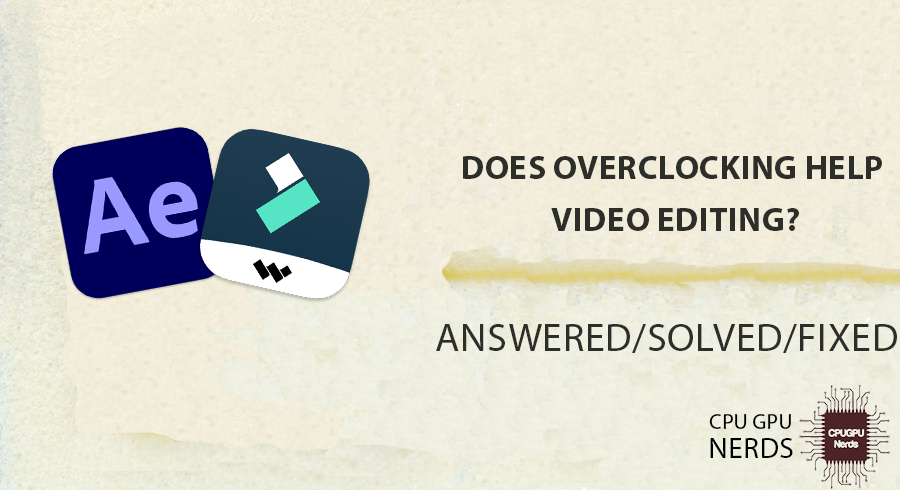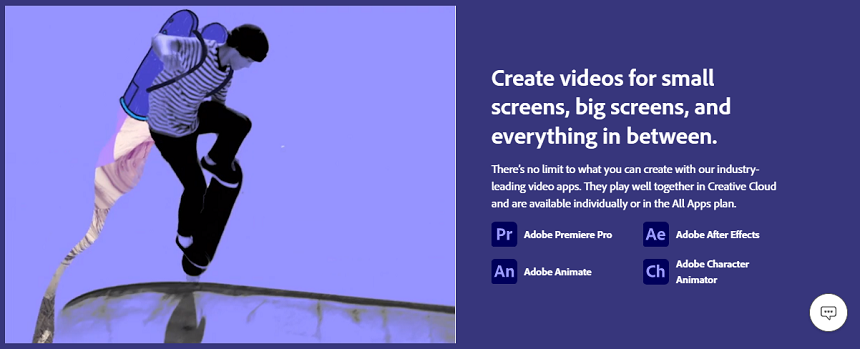Welcome to the overlocking universe: A depth overview for video producers and editors.
If you are an editor, staying in touch would be incredibly valuable for you! You’ve most likely heard of “overclocking”, it’s a hack to improve the performance of your computer by boosting the clock speed of CPU and GPU.
In this article, we take a closer look is helpful for video editing, its benefits and drawbacks. We’ll also go for some tips for good video editing if you run into any issues. Let’s accelerate for a smoother timeline and quicker rendering!
Does Overclocking Help Video Editing?
Overclocking increases GPU and CPU clock speeds, which improves the speed of rendering and helps in video editing. The overclocking is increasing the clock speed of a computer’s central processing unit (CPU) and/or graphics processing unit (GPU) to the maximum extent.
Overclocking can enhance the efficacy of specific applications, such as video editing. Nonetheless, it can cause instability, overheating, and hardware damage, so it should be cautiously approached.
Both the CPU and GPU are essential components that can benefit from optimization in video editing. The CPU manages data processing and command execution, while the GPU handles graphics and video processing.
An overclocked CPU can provide faster render times for video editing, enabling faster video exports. It is particularly useful for large or intricate video endeavors in which every second counts. In addition, an overclocked CPU can manage multiple video editing tasks concurrently, thereby reducing the overall duration of a project.
What Is The Minimum Requirement Of A GPU For Video Editing?
How much of a GPU you need for video editing depends on the software you’re using and how complicated the tasks that you’re doing are. However, a GPU with at least 2 GB of VRAM is recommended for most basic video editing tasks. But to use an advanced editing application, 4 GB is minimum.
If you’re working with bigger files or more complicated projects, you might want to consider a GPU with more VRAM, like 4GB or 6GB. Most people recommend a GPU with 8 GB or more of VRAM for high-end video editing to handle the heavy workload.
Remembering that a GPU is just one part of a video editing system is important. The CPU, RAM, and storage all play important roles as well. It’s important to ensure that every part of your system can handle video editing needs.
Which Component Should I Overclock To Increase Video Editing Performance?
The CPU (central processing unit) and GPU (graphics processing unit) are the most crucial components when it comes to video editing performance. Overclocking either of these components can potentially increase performance, but the effect will vary based on the software and workload being utilized.
In general, CPU overclocking can improve the performance of CPU-intensive video editings activities, such as rendering and encoding. In contrast, GPU overclocking can enhance the performance of GPU-intensive tasks such as video playback, effects processing, and 3D rendering.
Before attempting to overclock any components, you must ensure that your system is adequately chilled and that your power supply is stable. Overclocking can increase your components’ temperature and power requirements, which, if not properly managed, can cause instability or hardware damage.
Overclocking can void your warranty, so proceed at your peril. If you are uncomfortable with the procedure, you should consult a professional or use the default settings.
Will More RAM and GPU Make Video Render Fast?
When it comes to video rendering, having more RAM and a powerful GPU can make a substantial difference in terms of performance. Adding more RAM and a GPU may not always be the optimal solution. You must also have an amazing CPU to support the process.
The efficiency of video rendering is contingent on several variables, including the used software, the project’s complexity, and the processor’s performance. While adding more RAM and a GPU can help handle larger and more complex projects, the processor’s performance and the software being used also play a significant role.
In addition, having more RAM and a faster GPU does not automatically result in faster video rendering capabilities. Ensuring that the hardware components are configured and optimized for the employed software is essential. The ideal processor, RAM, and GPU ratio are required for optimal video rendering performance.
Why Is Overclocking Not Recommended?
While overclocking can increase performance, it can also have a number of negative side effects. Overclocking can increase the amount of heat generated by computer components, which can eventually cause hardware damage. That is why most manufacturers don’t recommend overclocking.
Increased heat can also cause instability and system failures, which can result in data loss and other complications. Second, overclocking can void the warranty on computer components, leaving users without recourse in the event of a malfunction.
Thirdly, overclocking can be a time-consuming and intricate procedure that necessitates a comprehensive understanding of computer hardware and software. It can also be dangerous, as even a minor error can cause hardware damage.
Overclocking can be tempting to increase performance, but it is generally not advised unless you are prepared to accept the associated risks and consequences. In most cases, it is preferable to invest in higher-performance components or pursue alternative methods to optimize the performance of your computer.
Conclusion
Overclocking is a great method to improve the video editing performance of your computer. By overclocking your CPU and GPU, you can significantly reduce rendering times and boost overall editing performance. However, it is essential to comprehend the potential risks and repercussions of overclocking, as it can cause instability, hardware damage, and warranty voiding.
If you are comfortable with the risks, overclocking is a great method to maximize your system’s performance. However, it is essential to comprehend how the components you are overclocking interact.
Ensure your system is properly chilled and your power supply is stable before attempting to overclock any components. In addition to overclocking, investing in higher-performance components and optimizing your system can aid in enhancing the performance of your video editing system.
In terms of performance, more RAM and a powerful GPU can make a significant difference, but a strong CPU is also essential. Additionally, it is essential to ensure that the hardware components are configured and optimized for the software being utilized.
Ultimately, overclocking can be an excellent method for optimizing your system for video editing. Overclocking can reduce rendering times and give you an advantage in how rapidly you can complete tasks.

Hey, I’m Hammad. I write for this website to help you with the IT advice about PC, RAM, CPU, Motherboard, PSU, and other PC components.
I will provide detailed guides with images, and explain step by step so you can understand the process. Check all my articles here.







